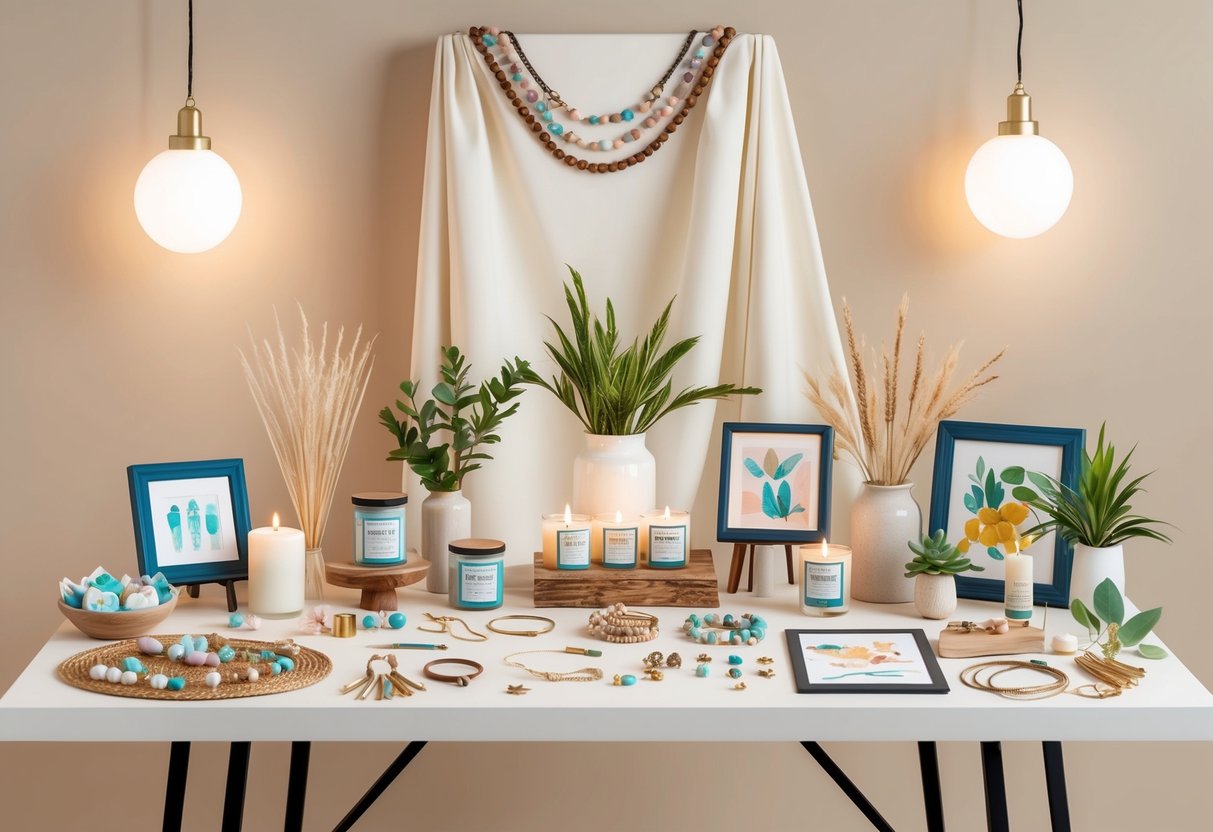
Exploring Offline Opportunities and Local Markets

Brick-and-mortar venues give handmade sellers a unique chance to build loyal local audiences and increase brand visibility. Direct interaction with shoppers in local craft fairs or artisan markets helps crafters gather feedback, adjust products in real time, and strengthen community ties.
Selling at Craft Fairs and Artisan Markets
Participating in craft fairs and artisan markets enables sellers to showcase their products directly to customers who value handmade goods. Well-known events such as local craft fairs and seasonal artisan markets provide access to targeted buyers who appreciate creative skills and unique items.
A booth at a busy market can generate a high volume of foot traffic. Personalized sales experiences often lead to repeat customers.
Tables or displays should be visually appealing, clearly priced, and well-organized to attract attention among numerous vendors. Many events are juried, so sellers may need to submit applications, product photos, and occasionally pay a booth fee.
Having an engaging setup and professional branding materials—such as business cards and signs—helps vendors stand out. These materials also make it easy for buyers to connect after the event.
To keep costs in check and expand networks, some artisans partner with others or share booth spaces. Events are also useful for marketing, product testing, and generating email signups for online shops.
Learn more about the benefits of craft venues for sellers at this overview of craft fairs and local markets.
Partnering with Local Boutiques
Local boutiques can offer crafters stable sales channels and exposure to shoppers seeking high-quality, distinctive goods not found in mass retailers. Many boutique owners look for locally-made, artisan pieces to diversify their inventory and connect with community artists.
Successful partnerships often begin by approaching stores with a curated sample of products and clear wholesale or consignment terms. Professional packaging is also important.
It’s important for crafters to research a boutique’s style beforehand to ensure alignment with their product’s aesthetic. Retail arrangements typically fall into two models:
- Consignment: Seller receives payment after the product sells.
- Wholesale: Seller receives payment upfront at a discounted rate.
Building good relationships with boutique owners can lead to featured displays, special events, and increased referrals. Regular communication and prompt restocking can help maintain a steady presence in store.
For more guidance, browse Hostinger’s list of profitable things to make and sell from home.
Frequently Asked Questions
Profitable DIY crafts in 2025 include jewelry, bath products, candles, and home décor. Many makers grow their online businesses by focusing on products with strong demand, manageable material costs, and accessible sales platforms.
What are the top trending DIY crafts to sell in 2025?
Jewelry, such as minimalist earrings and layered necklaces, continues to draw interest. Handmade candles, bath bombs, and personalized tote bags are trending as shoppers seek unique, handcrafted products.
For more trending ideas, see Shopify’s list of DIY crafts to sell in 2025.
Which handmade items are currently most profitable online?
Jewelry, custom apparel, and natural soaps are among the most profitable. Subscription boxes featuring curated handmade goods or themed product sets also perform well on online marketplaces.
Low-cost digital art prints, stickers, and planners remain popular due to their high margins.
What easy-to-make crafts can generate substantial income from home?
Soy candles, bath salts, T-shirts, and resin coasters are favorites due to simple production and steady demand. Scented candles and printed mugs sell well without complicated equipment.
Personalized keychains or wall art require minimal materials. Hostinger identifies these as profitable things to make and sell from home.
How can one identify crafts with low production costs and high demand?
Reviewing bestsellers on platforms like Etsy, attending virtual craft fairs, and researching popular hashtags on social media signal which crafts are in demand. Products using inexpensive materials like paper, soy wax, or fabric scraps often offer high returns with relatively low investment in supplies.
Which crafts are consistently popular and easy to sell for small businesses?
Seasonal home décor, handmade soap, and jewelry remain reliable. Candles and T-shirts regularly attract buyers, particularly with trendy or customizable designs.
Subscription boxes featuring curated, handmade items frequently generate recurring revenue and strong repeat sales.
What strategies are effective for marketing homemade crafts online?
Effective strategies include setting up shops on marketplaces like Etsy, Shopify, or Amazon Handmade. Using social media platforms for promotion is also beneficial.
Building an email list allows for direct outreach. Clear product photography and detailed descriptions help attract buyers.
Engagement via platforms like Instagram or Pinterest can expand visibility. Tutorials on successful online handmade businesses are available on YouTube.



